What is On-Page SEO? Understanding its Foundations and Importance
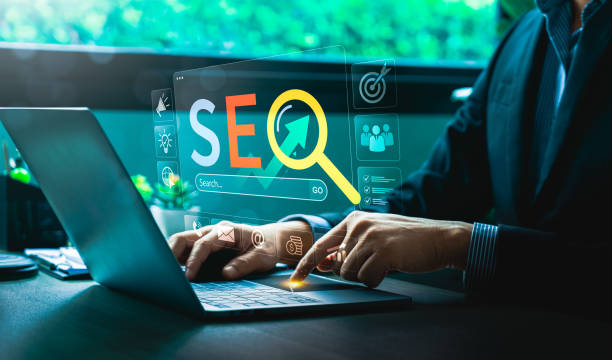
#SEO #Optimization #Website
In today’s competitive internet world, On-Page SEO has become more important than ever.
On-Page SEO refers to all the actions you take within your website to improve its ranking in search engine results.
These actions include optimizing content, site structure, and its HTML code.
Unlike Off-Page SEO, which focuses on backlinks and off-site activities, On-Page SEO is entirely under your control and provides more room for maneuver to improve performance.
The main goal of on-page optimization is to help search engines better understand your content and determine its relevance to keywords searched by users.
From an educational perspective, a deep understanding of On-Page SEO is vital for any website owner, digital marketer, or content creator.
This process includes optimizing titles (H1, H2, …), meta descriptions, URLs, image alt text (Alt text), and even internal link structure.
Each of these elements plays a significant role in how search robots perceive your page.
Engaging content can also help improve On-Page SEO, as answering common user questions increases the value of your content and the likelihood of attracting more traffic.
The importance of On-Page SEO is not limited to ranking; this process also significantly contributes to user experience (UX).
A website with strong On-Page SEO usually has faster loading speeds, is more visually appealing, and has easier navigation, all of which mean greater user satisfaction.
When users have a good experience on your website, their likelihood of returning and converting into customers increases.
Therefore, internal optimization is a long-term investment that helps both your ranking and your business goals.
As a guide, always remember that On-Page SEO is an ongoing process.
Search engine algorithms are constantly changing, and you must adapt to these changes.
Monitoring keyword performance, checking organic traffic, and analyzing user behavior are among the activities that should be performed regularly.
Investing in powerful On-Page SEO not only makes you visible in the online space but also helps build a strong and reputable brand.
Therefore, mastering the principles of this field is essential for anyone who wants to succeed online.
Is your company website performing as well as your brand deserves? In today’s competitive world, your website is your most important online tool. Rasaweb, specializing in professional corporate website design, helps you to:
✅ Gain customer credibility and trust
✅ Convert website visitors into customers
⚡ Get a free consultation!
Keywords and Content: The Backbone of Effective On-Page SEO

#Keyword #Content #Research
One of the most important aspects of On-Page SEO is the correct selection and use of keywords.
Keyword research not only helps you understand what users are looking for but also paves the way for producing specialized content and relevant content.
Without thorough research, the likelihood of your content being well-seen in search engines is low.
This process involves identifying main keywords (head keywords) and long-tail keywords that can drive targeted traffic to your site.
Choosing the right keywords requires understanding user intent; is the user looking for information, planning to buy, or searching for a specific website?
After selecting keywords, the next step is to produce descriptive and high-quality content.
Content is king, and this statement holds true more than ever in On-Page SEO.
Your content should not only be optimized for search engines but also be valuable and engaging for users.
This means avoiding keyword stuffing, as this not only harms the user experience but can also be penalized by search engines.
Instead, naturally place keywords in titles, subtitles, paragraphs, and even in the URL and meta description.
On-Page SEO for content goes beyond just text.
Images, videos, and infographics should also be optimized.
For images, using relevant Alt text containing keywords is essential.
Descriptive naming of image files also helps search engines better understand your visual content.
This specialized approach to optimizing all aspects of content helps increase the visibility of your page in search results.
As a guide, update your content regularly.
Analytical content and news content can help attract new traffic and maintain the interest of current users.
Search engines place great value on fresh and relevant content.
By adding new information, updated statistics, and expert opinions, you can show search engines that your website is a credible and dynamic resource.
Ultimately, the quality and relevance of your content to the chosen keywords guarantee your success in content optimization and attracting more organic traffic.
This approach is the foundation of any successful On-Page SEO strategy.
Optimizing On-Page Elements: From Title Tag to URL
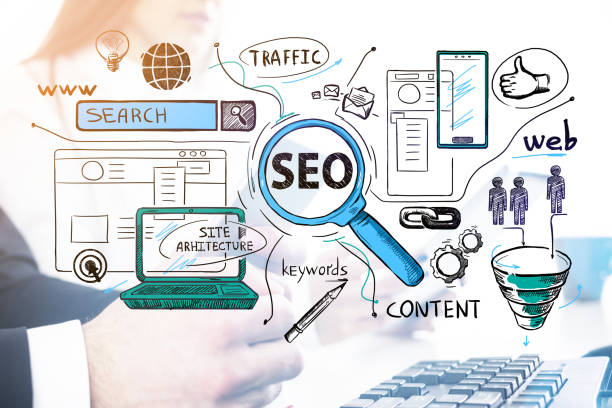
#Title_Tag #Meta_Description #URL
In On-Page SEO, every element on your web page can play a role in how it ranks.
The Title Tag is one of the most vital of these elements.
This tag is the title displayed in the browser tab and in search results, and it’s the first thing users see.
It should contain your main keyword and at the same time be appealing and descriptive to encourage users to click.
The ideal length for a title tag is usually between 50 and 60 characters.
Adhering to these educational points is very important.
The Meta Description, although not directly affecting ranking, plays an important role in click-through rate (CTR).
These short descriptions provide more information about the page’s content to users and search engines.
They should contain relevant keywords and be written to encourage the reader to click on your link.
This element is also part of the descriptive information that helps search engines understand the page’s content.
The URL structure is also very important in On-Page SEO.
Short, descriptive URLs containing keywords are more understandable for both users and search engines.
Avoid long and meaningless URLs that include unrelated numbers and characters.
Hierarchical URL structures can also help search engines understand your website’s structure.
| On-Page SEO Element | Importance | Optimization Tips |
|---|---|---|
| Title Tag | Very High | Includes main keyword, appealing and concise (50-60 characters). |
| Meta Description | Medium (Indirect impact on ranking) | Encourages clicks, includes keywords, around 150-160 characters. |
| URL | Medium | Short, descriptive, includes keyword, use hyphens for separation. |
| Headings (H1-H6) | High | Logical and hierarchical use, H1 for main title, includes keywords. |
| Image Alt Text | Medium | Descriptive and includes keywords, improves accessibility. |
Other important elements in on-page optimization include using appropriate headings (H1, H2, H3, etc.).
H1 should be the main title of the page and used only once per page.
H2 and H3 are used to divide content into smaller, more readable sections.
This hierarchy helps search engines understand the structure and importance of different parts of your content.
The more logical and understandable your site structure is, the better chance you’ll have for good ranking in search results.
Adhering to these technical and guidance-providing principles is the basis of a successful On-Page SEO strategy.
Site Structuring and Internal Links: Essential Roles in On-Page SEO

#Site_Structure #Internal_Link #Navigation
An optimized and logical site structure is an integral part of successful On-Page SEO.
Site structure refers to how your website’s pages are organized and helps search engines crawl and index your content more effectively.
A hierarchical structure that starts from the homepage and leads to categories, subcategories, and finally individual pages, is usually the best approach.
This descriptive and educational approach shows search engines which pages are more important.
Internal Links are a powerful tool in On-Page SEO that are often overlooked.
These links connect different pages within your website to each other.
Intelligent use of internal links can help improve your on-page optimization in several ways:
- **Passing Page Authority:** Internal links help distribute “Link Juice” (Link Juice) or page authority throughout your site.
- **Improving User Navigation:** Users can easily move between related pages, which leads to improved user experience.
- **Helping Crawlers:** Search engine bots can discover and index more pages on your site.
When creating internal links, using relevant and keyword-rich Anchor Text is very important.
Anchor text is the text on which a link is placed and provides information to search engines about the content of the destination page.
This is a technical aspect in On-Page SEO that can significantly impact your ranking.
For example, if you are linking to a page about “best smartphones,” the anchor text “best smartphones” is better than “click here.”
Additionally, an XML Sitemap (XML Sitemap) is an essential guide for search engines.
This file contains a list of all important pages on your website and helps search engines find and index new or updated pages faster.
Ensuring that your sitemap is up-to-date and correctly submitted to Google Search Console is an important part of technical On-Page SEO.
Ultimately, the more organized and understandable your website is for bots and users, the better chance you will have of achieving high rankings in search results.
Research shows 80% of customers trust companies with a professional website more. Does your current site build this trust?
With Rasaweb’s corporate website design services, solve the problem of customer distrust and a weak online image forever!
✅ Create a professional image and increase customer trust
✅ Attract more sales leads and grow your business
⚡ Get a free consultation
Loading Speed and Mobile Responsiveness: Hidden Factors of On-Page SEO
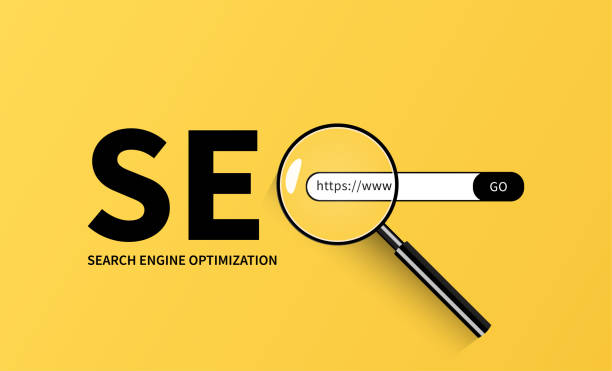
#Site_Speed #Mobile_Friendly #User_Experience
In today’s digital age, website loading speed and its responsiveness for mobile devices are no longer just advantages but are considered necessities for On-Page SEO.
Search engines like Google place great importance on page loading speed and mobile compatibility, considering these factors as ranking signals.
A slow or unviewable website on mobile not only provides a poor user experience (UX) but also increases the bounce rate and reduces the user’s time spent on the site.
These issues can negatively impact your SEO ranking.
To improve site speed, several technical actions can be taken: optimizing images (reducing size without significant quality loss), using browser caching, compressing CSS and JavaScript files, and choosing a high-quality, high-speed hosting provider.
Tools like Google PageSpeed Insights can help you analyze site speed and provide practical guidance for improvement.
Analytical content in this area shows that even a few milliseconds of delay in page loading can have a significant impact on user behavior and conversion rates.
Mobile Responsiveness is also of high importance.
Given the increasing use of smartphones to access the internet, ensuring that your website is displayed correctly on various screen sizes is crucial.
Google uses Mobile-First Indexing, meaning it considers the mobile version of your website as the primary version for indexing and ranking.
Therefore, if your website is not optimized for mobile, you will have little chance of competing in search results.
This is an important explanation for understanding the current approach of search engines.
To check mobile responsiveness, you can use Google’s Mobile-Friendly Test tool.
This tool shows you whether your page is mobile-friendly or not, and if there are issues, what actions are needed to improve it.
Investing in responsive design and site speed optimization not only helps improve your On-Page SEO but also enhances the overall user experience and leads to converting visitors into loyal customers.
These actions are the cornerstone of a successful and sustainable website in the long run.
The Importance of User Experience (UX) in Modern On-Page SEO
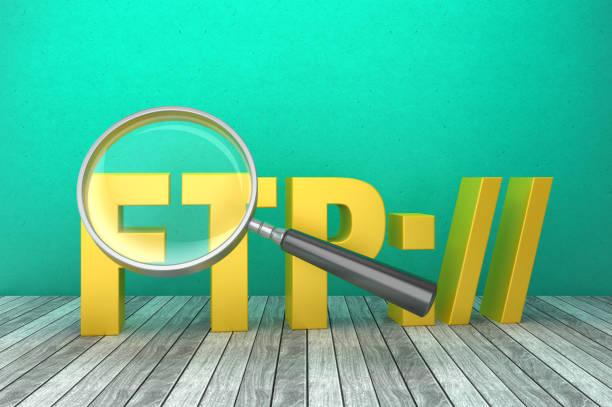
#User_Experience #UX #User_Satisfaction
In the modern approach to On-Page SEO, user experience (UX) is no longer a separate concept but is inextricably linked with ranking factors.
Search engines are becoming smarter every day and gaining more ability to understand how users interact with your website.
Factors such as Bounce Rate, Dwell Time, number of pages visited per session, and interaction with site elements (clicks and scrolls) are all indicators of user experience quality that directly impact your SEO ranking.
A website with excellent UX naturally brings these positive metrics.
Engaging content can play an important role in improving UX.
When users enjoy your content, they spend more time on your site and are more likely to visit other pages.
This not only helps reduce bounce rate but also sends positive signals to search engines that your content is valuable and relevant.
This technical aspect of SEO goes beyond merely placing keywords.
Website visual design, easy navigation, readable fonts, appropriate use of white space, and the absence of intrusive pop-ups are all elements that help improve UX.
Guidance for improving UX includes using user testing tools, gathering feedback, and analyzing user behavior through tools like Google Analytics.
This data can provide valuable insights for further optimization.
One of the other key aspects of UX in on-page optimization is Google’s Core Web Vitals.
These are a set of metrics related to page loading speed, interactivity, and visual stability that Google considers important ranking factors.
Improving these metrics directly contributes to improving user experience and, consequently, SEO.
Adhering to these descriptive and educational principles is very important.
Ultimately, the goal of On-Page SEO should go beyond just appealing to search robots; it should primarily focus on providing the best possible experience to users.
When your website is designed for users, it will naturally be favored by search engines as well.
This holistic approach ensures your long-term success in the complex world of SEO.
Optimizing Images and Videos for On-Page SEO
![]()
#Image_Optimization #Video_SEO #Multimedia
Visual content, including images and videos, not only adds appeal to your website but also plays an important role in On-Page SEO.
Optimizing these elements can help search engines better understand your content and display it in image or video search results, which leads to increased traffic.
This part of specialized SEO is often overlooked but has great potential for improving visibility.
For images, the most important point is using appropriate “Alt Text”.
Alt text is a text description for the image that is displayed if the image fails to load, and it is also used by screen readers for users with disabilities.
This text should be descriptive and include relevant keywords, but avoid keyword stuffing.
The image file name should also be descriptive and relevant (e.g., “best-smartphone-2023.jpg” instead of “IMG001.jpg”).
Compressing images to reduce their size without significant quality loss is also crucial to improve page loading speed.
This is a key guidance for site performance.
Videos also have high potential in on-page optimization.
Optimizing videos includes:
- **Using Schema Markup tags:** These tags help search engines better understand your video content and display it as Rich Snippets in search results.
- **Appropriate Title and Descriptions:** Video titles and descriptions should contain main keywords and be descriptive.
- **Transcript:** Providing a text transcript of the video can help search engines understand the audio content and also improve accessibility for users.
- **Video Hosting:** Hosting videos on platforms like YouTube and then embedding them on your website can help leverage the authority of these platforms.
Descriptive content and educational content with visuals and videos can increase user engagement and improve dwell time, both of which are positive signals for On-Page SEO.
For example, an analytical content about how a product works can be much more effective using videos.
Also, adding a Video Sitemap can help search engines discover and index your videos.
By correctly optimizing visual elements, you can gain a significant competitive advantage in search engine optimization and achieve desired results.
Tools and Analytics in On-Page SEO: Measuring and Improving Performance
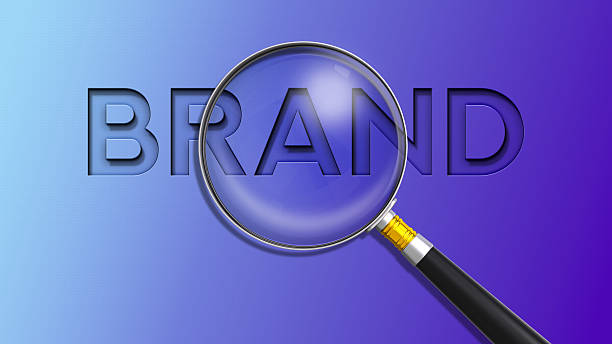
#SEO_Tools #SEO_Analytics #Performance_Measurement
For any successful On-Page SEO strategy, only implementation is not enough; performance must be continuously measured, and optimizations must be made based on data.
Here, tools and analytical platforms play a crucial role.
Using these tools allows you to gain deep insights into how users interact with your website, the keywords through which you acquire traffic, and the strengths and weaknesses of your On-Page SEO.
This aspect of specialized SEO requires understanding and accurate interpretation of data.
Google Analytics (Google Analytics) and Google Search Console (Google Search Console) are two essential free guiding tools for anyone involved in SEO.
Google Analytics provides data related to user behavior: where they came from, how long they stayed on the site, which pages they visited, and their bounce rate.
This information is vital for understanding user experience and identifying On-Page SEO issues.
Google Search Console also provides information on site performance in search results, top keywords, crawl and index issues, and even backlinks.
This tool helps you identify and fix technical SEO problems.
Other tools such as SEMrush, Ahrefs, Moz, and Screaming Frog are also very useful for SEO analysis and keyword research.
These more advanced tools offer capabilities such as competitor analysis, identifying new keyword opportunities, checking site technical health, and monitoring backlinks.
Investing in these tools can help accelerate the on-page optimization process and gain a competitive advantage.
| Tool | Description | Application in On-Page SEO |
|---|---|---|
| Google Analytics | Analyzes website traffic and user behavior | Checks bounce rate, dwell time, identifies high-traffic pages, analyzes user demographics. |
| Google Search Console | Monitors site performance in Google search results | Checks keywords, crawl issues, Core Web Vitals, index status. |
| SEMrush / Ahrefs | Comprehensive SEO tools (paid) | Keyword research, competitor analysis, rank monitoring, checking site technical health. |
| PageSpeed Insights | Analyzes page loading speed | Identifies opportunities to improve site speed on mobile and desktop. |
| Screaming Frog SEO Spider | Site crawler for technical SEO audit | Identifies broken links, heading issues, title and meta tags, redirect status. |
Collecting and regularly analyzing this data helps you make more informed decisions to improve your On-Page SEO.
Through this, you can understand which strategies are working and which need revision.
This continuous analytical process is the key to sustainable success in SEO.
Do you know that the first impression customers have of your company is your website? With a powerful corporate website from Rasaweb, multiply your business credibility!
✅ Custom and eye-catching design tailored to your brand
✅ Improved user experience and increased customer attraction
⚡ Get a free consultation!
Common On-Page SEO Mistakes and How to Avoid Them
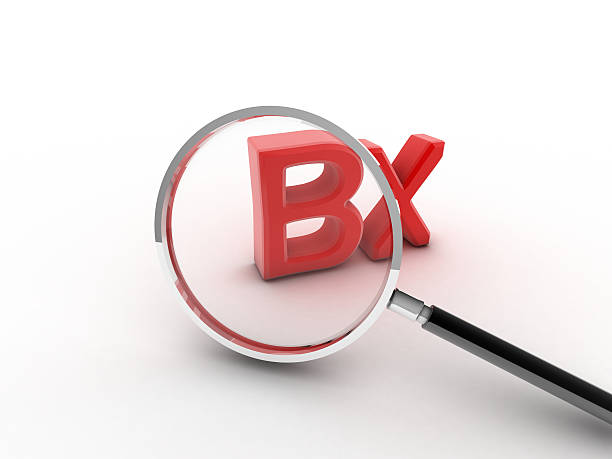
#SEO_Mistakes #Avoidance #Sustainable_Optimization
In the journey of On-Page SEO, making common mistakes can render your efforts fruitless and even harm your website’s ranking.
Awareness of these errors and how to avoid them is an important part of any SEO education.
One of the most common mistakes is “Keyword Stuffing”, which means using a keyword excessively in content in an unnatural way.
This not only degrades the user experience but is also identified as spam by search engines and penalized.
Your content should be natural and fluent.
Another common mistake is neglecting the importance of title tags and meta descriptions.
Many websites do not use these tags correctly or leave them repetitive.
Each page must have a unique title tag and meta description optimized for that page’s main keywords.
This is an important explanation for attracting users in search results.
Ignoring site loading speed and mobile responsiveness is also a big mistake in On-Page SEO.
As mentioned earlier, these factors are highly important and can directly affect ranking and user experience.
Many websites still have large images or inefficient code that severely reduces loading speed.
This is an intriguing question as to why some businesses still don’t pay attention to these aspects.
Lack of sufficient internal links or incorrect linking can also harm On-Page SEO.
Websites with a poor internal link structure are harder for search engines to crawl and index, and they miss out on page authority transfer.
Creating thin or low-quality content is another mistake.
Your content should be deep, comprehensive, and useful for users to achieve a good ranking.
Specialized content that is longer usually performs better in search results.
Finally, the lack of continuous monitoring and analysis of on-page optimization performance is a strategic mistake.
SEO is not a static process; it requires regular monitoring and updates.
Without reviewing data and analyzing competitors, you cannot identify weaknesses and apply the necessary improvements.
By avoiding these common mistakes, you can ensure that your efforts in On-Page SEO will lead to desired results and your website will consistently rank in search engines.
This proactive approach is the key to success.
The Future of On-Page SEO: AI and User Experience Signals

#Future_of_SEO #Artificial_Intelligence #User_Experience_Signals
The world of SEO is constantly evolving, and On-Page SEO is no exception.
A look into the future shows that the role of Artificial Intelligence (AI) and the importance of User Experience Signals will become more prominent than ever.
Search engines, especially Google, are increasingly using AI to better understand User Intent and provide the most relevant and high-quality results.
This is exciting news for SEO professionals.
AI-powered algorithms like Google’s BERT and MUM allow search engines to understand not only keywords but also the overall meaning and concept of a searched query.
This means that on-page optimization is no longer just about using specific keywords, but rather focuses on producing comprehensive, in-depth content that answers all aspects of a user’s question or need.
Analytical content and conceptual content become more important.
User experience signals, such as dwell time, bounce rate, click-through rate (CTR) in search results, and overall content engagement, are increasingly becoming ranking factors.
Google, with the introduction of Core Web Vitals, has clearly shown how important technical website optimization is to provide a smooth and enjoyable user experience.
This explanation underlines the necessity of investing in site speed, visual stability, and interactivity.
Engaging content and interactive content will also play an important role in the future of On-Page SEO.
Content that engages users makes them spend more time on the site and visit more pages.
This includes using videos, quizzes, interactive tools, and compelling storytelling.
Also, optimizing for Voice Search and Visual Search is growing, and On-Page SEO professionals must prepare for these changes.
Ultimately, the future of On-Page SEO is moving towards a more comprehensive and user-centric approach.
This means that websites must not only be technically optimized but also provide high-quality content and an exceptional experience for users.
The main guidance for the future is to keep up with the latest advancements in AI and focus on providing real value to users.
Frequently Asked Questions
| Question | Answer |
|---|---|
| What is On-Page SEO? | On-Page SEO involves optimizing elements that are directly under your control and within your website. Its goal is to help search engines better understand the page content and improve its ranking. |
| Why is On-Page SEO important? | On-Page SEO gives clear signals to search engines about the page’s content, improves user experience, and increases the chance of attracting organic traffic. |
| What are the most important On-Page SEO factors? | Keywords, Title Tag, Meta Description, URL structure, quality content, image optimization, and internal links are among the most important factors. |
| What is the role of the Title Tag in On-Page SEO? | The title tag is one of the most important signals for search engines and users, indicating the main topic of the page. It should include the main keyword and be engaging. |
| How important is the Meta Description? | The meta description does not directly affect ranking, but by encouraging users to click, it can improve the click-through rate (CTR). |
| How do you optimize images for On-Page SEO? | By using descriptive file names, appropriate Alt Text containing keywords, compressing to reduce size, and correct dimensions. |
| What effect do Internal Links have on SEO? | Internal links help search engines discover and index site pages, distribute authority (PageRank) throughout the site, and improve user navigation. |
| Is page loading speed a factor in On-Page SEO? | Yes, page loading speed is a critical factor in On-Page SEO and user experience. Slower pages can lead to higher bounce rates and lower rankings. |
| What are the characteristics of quality content for On-Page SEO? | Quality content should be comprehensive, unique, relevant, trustworthy, readable, and fully answer users’ needs and questions. |
| How can keywords be used in content? | Keywords should be used naturally in the title, subtitles, first paragraph, body text, and image alt text. Avoid keyword stuffing. |
And other services of Rasaweb Advertising Agency in the field of advertising
Smart Google Ads: A professional solution to improve SEO ranking with a focus on optimizing key pages.
Smart Data Analysis: A combination of creativity and technology to attract customers through custom programming.
Smart Marketing Automation: An effective tool for user interaction with the help of user experience customization.
Smart Custom Software: A novel service for improving SEO ranking through an SEO-focused content strategy.
Smart Press Release (Rapportage): A novel service for increasing sales through custom programming.
And over a hundred other services in the field of internet advertising, advertising consulting, and organizational solutions
Internet Advertising | Advertising Strategy | Press Release Advertising
Resources
Advanced On-Page SEO TrainingOn-Page Optimization for BeginnersComprehensive Guide to Technical SEOOn-Page SEO Principles in 2024
? Ready to transform your business in the digital world? Rasaweb Afarin, with expertise in secure website design, professional SEO, and content marketing, paves your way to success and visibility. With us, secure the future of your online business.
📍 Tehran, Mirdamad Street, next to Bank Markazi, Kazeroon Jonubi Alley, Ramin Alley, No. 6



